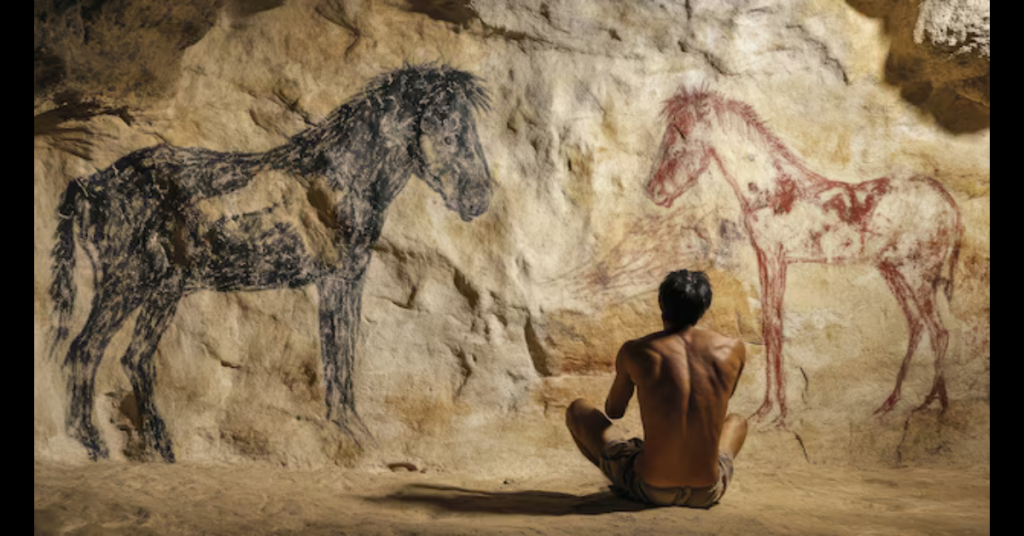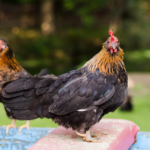The aquiline nose’s, often described as having a prominent, curved shape resembling that of an eagle’s beak, has intrigued artists, historians, and cultural observers throughout the ages. This distinct facial feature is not only a matter of aesthetic appreciation but also carries a significant historical and cultural weight across different societies. This comprehensive exploration delves into the characteristics of the aquiline nose’s, its cultural significance, historical context, and its representations in art and literature, revealing the multifaceted nature of this intriguing feature Aquiline Nose
I. Characteristics of the Aquiline Nose
1.1 Physical Description
The term “aquiline” is derived from the Latin word aquilinus, meaning “like an eagle.” This name reflects the defining characteristics of the nose, which typically includes:
- Curvature: An aquiline nose’s features a prominent bridge that curves downward, often leading to a sharp or pointed tip. This curvature can vary in intensity, with some individuals displaying a more pronounced arc than others.
- Length: Aquiline noses tend to be longer than average, contributing to their distinctive profile. The length can accentuate the curvature and give the nose a commanding presence.
- Nasal Bridge: The nasal bridge of an aquiline nose is often elevated, creating a strong, defined appearance that can enhance facial symmetry.
- Nostrils: The nostrils may be slightly flared, adding to the nose’s overall prominence.
1.2 Variations and Types
Aquiline noses can vary significantly among individuals, and these variations can be influenced by factors such as genetics, ethnicity, and age. Some common variations include:
- Roman Nose: Often used interchangeably with “aquiline,” the Roman nose features a pronounced arch and a strong bridge, giving it a powerful aesthetic appeal.
- Hooked Nose: This variant features a more pronounced downward curve, resembling a hook, which can create a more dramatic profile.
- Straight Aquiline Nose: Some individuals possess a less pronounced curve, resulting in a straighter appearance while still maintaining the essential characteristics of an aquiline nose.
1.3 Genetic and Environmental Influences
The shape and size of the nose, including the aquiline type, can be influenced by both genetic and environmental factors:
- Genetics: Inherited traits play a crucial role in determining the shape and structure of an individual’s nose. Family history can reveal patterns in nose shape that can indicate genetic predisposition to certain features.
- Ethnicity: Different ethnic groups exhibit distinct nasal characteristics. Aquiline noses are commonly associated with individuals of Mediterranean, Middle Eastern, and certain European descent, though they can appear in diverse populations.
- Age: As individuals age, changes in skin elasticity and fat distribution can alter the appearance of the nose. An aquiline nose may become more pronounced or, conversely, appear less so with age.
II. Cultural Significance
2.1 Symbolism of the Aquiline Nose
The aquiline nose has been associated with various cultural meanings and symbolisms throughout history. Its prominent and striking appearance often evokes ideas of strength, nobility, and intelligence. In many cultures, certain physical traits, including the nose, are linked to character attributes, with the aquiline nose often viewed as a sign of:
- Leadership: The commanding presence of an aquiline nose has made it a feature often associated with leaders and figures of authority. Historical depictions of kings, queens, and powerful individuals frequently highlight this nose type, reinforcing its association with leadership qualities.
- Intelligence: In some cultures, a pronounced aquiline nose is seen as a marker of intelligence and wisdom. This perception may stem from the historical representation of intellectual figures, such as philosophers and scholars, who often possessed this feature.
- Nobility and Aristocracy: The aquiline nose has long been associated with aristocracy and nobility. Its prominence in portraits and sculptures of historical figures has contributed to the perception of an aquiline nose as a marker of social status.
2.2 Representation in Art and Literature
The aquiline nose’s has been featured prominently in art and literature throughout history, serving as a visual symbol for various characters and themes. Notable representations include:
- Classical Sculpture: In ancient Greek and Roman sculptures, the aquiline nose is often depicted in statues of gods, goddesses, and leaders. The elongated, curved noses were used to convey ideals of beauty and strength, reinforcing the cultural appreciation for this feature.
- Portraits of Nobility: During the Renaissance and Baroque periods, portraits of nobility often highlighted aquiline noses. Artists used this feature to convey power, status, and elegance, making it a hallmark of aristocratic representation.
- Literary Characters: In literature, characters with aquiline noses are frequently portrayed as wise, cunning, or powerful. These associations often reflect societal perceptions of physical features and their link to personality traits.
2.3 Cultural Perceptions and Stereotypes
Cultural perceptions of the aquiline nose can vary widely across different societies, sometimes leading to stereotypes. For example:
- Middle Eastern and Mediterranean Cultures: In some Middle Eastern and Mediterranean cultures, an aquiline nose is often celebrated as a symbol of beauty and strength. Many historical and contemporary figures from these regions possess this feature, contributing to its positive connotation.
- Negative Stereotypes: In certain contexts, the aquiline nose has been unfairly associated with negative stereotypes. For instance, in some cultures, this nose type has been linked to traits such as cunning or trickery, reflecting broader societal biases.
III. Historical Context
3.1 Aquiline Nose in Antiquity
The historical significance of the aquiline nose’s can be traced back to ancient civilizations. In Ancient Rome, the nose was often seen as a marker of personal identity and social status. Prominent figures, such as emperors and generals, were frequently depicted with aquiline noses in statues and coins, reinforcing the notion of power and authority associated with this feature.
3.2 Renaissance and Baroque Periods
During the Renaissance and Baroque periods, the aquiline nose continued to hold cultural significance. Artists sought to capture the idealized forms of beauty, and the aquiline nose became a preferred feature in the portrayal of nobility and divine figures. This period saw an emphasis on the balance of proportions in art, where the aquiline nose played a crucial role in achieving harmony in facial representation.
3.3 Modern Perspectives
In contemporary society, perceptions of the aquiline nose’s have evolved. While some individuals still celebrate this feature as a sign of beauty and sophistication, others may seek to alter their appearance through cosmetic procedures. Rhinoplasty, a popular surgical option, allows individuals to modify the shape and size of their noses, leading to an ongoing conversation about beauty standards and societal expectations.
IV. Aquiline Nose in Different Cultures
4.1 Aquiline Nose in European Cultures
- Italy: In Italian culture, the aquiline nose’s is often associated with beauty and elegance. Many famous Italian figures, such as the artist Michelangelo and the poet Dante Alighieri, are depicted with this feature in portraits.
- Spain: The aquiline nose’s is also common in Spanish culture, where it is frequently seen in portraits of nobility and historical figures. Spanish artists often highlighted this characteristic in their works, showcasing its association with strength and power.
4.2 Aquiline Nose in Middle Eastern Cultures
In many Middle Eastern cultures, the aquiline nose’s is celebrated as a symbol of beauty and distinction. Historical figures and modern celebrities with aquiline noses are often revered, contributing to a positive perception of this feature.
4.3 Aquiline Nose in Asian Cultures
While the aquiline nose’s is less common in some Asian cultures, it is still appreciated in certain contexts. For example, in countries such as India, the aquiline nose is often considered attractive and is featured in traditional sculptures and art forms.
V. Modern Trends and Changing Perceptions
5.1 Cosmetic Surgery and Rhinoplasty
In recent years, there has been a growing trend toward cosmetic surgery, particularly rhinoplasty, to alter the shape and size of the nose. While some individuals seek to enhance their aquiline nose, others may choose to modify or eliminate its prominent features. This reflects broader societal discussions about beauty standards and individual preferences.
5.2 Embracing Natural Features
Despite the rise of cosmetic procedures, there is also a movement toward embracing natural features, including the aquiline nose. Many individuals celebrate their unique attributes and seek to redefine beauty standards, promoting self-acceptance and confidence in one’s appearance.
5.3 Cultural Representation in Media
The representation of aquiline noses in modern media has become more diverse and inclusive. Many film and television portrayals highlight characters with aquiline noses, often depicting them as strong and complex individuals. This shift in representation contributes to a broader acceptance of various physical features in popular culture.
VI. Conclusion
The aquiline nose’s is a fascinating feature that carries significant historical, cultural, and personal meanings. From its prominent representation in art and literature to its associations with power and nobility, the aquiline nose remains a captivating subject of exploration. As society continues to evolve, so do perceptions of beauty and individuality, allowing people to embrace their unique features while redefining beauty standards. Ultimately, the aquiline nose stands as a symbol of strength, intelligence, and cultural identity, reminding us of the beauty found in diversity and the stories that shape our understanding of ourselves and others.







